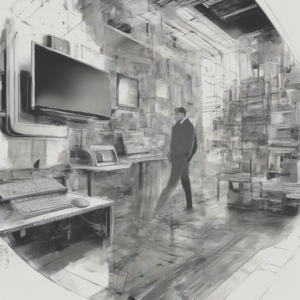North American Industrial Revolution: A Colossus Forged in Fire and Innovation
The North American industrial revolution, a period of unprecedented technological advancement and societal transformation, fundamentally reshaped the continent’s landscape, economy, and social fabric. Unlike the gradual evolution seen in Europe, North America experienced a more rapid and intense industrialization, driven by a confluence of factors including abundant natural resources, a burgeoning population, and a uniquely entrepreneurial spirit. This essay will explore the key drivers, phases, and consequences of this pivotal period, highlighting its lasting impact on the modern world.
Early Stirrings: Pre-Industrial Foundations (Pre-1800s)
While often overshadowed by the later explosive growth, the pre-industrial period laid crucial groundwork. Early American industry relied heavily on skilled artisans and small-scale production. The development of water-powered mills, particularly in New England, provided a crucial early boost to manufacturing, primarily focused on textiles and lumber. The burgeoning agricultural sector, fueled by technological innovations like the cotton gin, created a growing demand for manufactured goods and a surplus labor pool that would eventually migrate to urban centers.
- Resource Abundance: Vast reserves of timber, coal, iron ore, and other raw materials provided the essential building blocks for industrial expansion.
- Transportation Advances: Canals, initially, and later, railroads, dramatically improved the movement of goods and people, connecting previously isolated regions and facilitating trade.
- Technological Innovation: While initially borrowing from European advancements, American inventors quickly made their own contributions, leading to improvements in machinery and manufacturing processes.
The Rise of the Factory System (1800-1860)
The early 19th century witnessed the emergence of the factory system, characterized by centralized production, division of labor, and the use of machinery. The textile industry served as a leading example, with factories springing up in New England and later spreading across the country. This period also saw significant advancements in other sectors, including iron production, steam power, and machine tools. The growth of factories spurred urbanization, as rural workers migrated to urban centers in search of employment.
- Textile Industry Boom: The mechanization of textile production, including the power loom and cotton gin, dramatically increased output and led to the concentration of labor in factories.
- Steam Power Revolution: The adoption of steam power freed factories from reliance on water power, enabling the expansion of industry beyond river valleys.
- Iron and Steel Production: Advancements in iron and steel production laid the foundation for the construction of railroads, bridges, and other infrastructure.
- Interchangeable Parts: Eli Whitney’s concept of interchangeable parts revolutionized manufacturing, allowing for mass production and simplified repair.
The Civil War and its Aftermath (1860-1900)
The American Civil War (1861-1865) acted as a catalyst for further industrial growth. The war’s massive demand for weapons, supplies, and transportation spurred innovation and expanded industrial capacity. Post-war reconstruction saw continued industrial expansion, fueled by government policies, technological advancements, and the rise of large corporations.
- Government Support: Post-war policies, including land grants and subsidies, facilitated the expansion of railroads and other infrastructure.
- Technological Innovations: Advancements in steel production, electricity, and communication technologies further fueled industrial growth.
- Rise of Big Business: The late 19th century witnessed the emergence of powerful corporations, such as Standard Oil and Carnegie Steel, that dominated their respective industries.
- Labor Movements: The rapid growth of industry led to the rise of labor unions and movements advocating for better working conditions and wages.
The Age of Electricity and Mass Production (1900-1945)
The early 20th century ushered in the age of electricity and mass production. The widespread adoption of electricity revolutionized factories, enabling more efficient and flexible production processes. The development of the assembly line, pioneered by Henry Ford, enabled mass production of automobiles and other consumer goods. This period also saw significant growth in other sectors, including chemicals, oil, and consumer goods.
- Electricity’s Impact: The adoption of electric power transformed factories, enabling greater productivity and flexibility.
- Mass Production: The assembly line and other mass production techniques led to dramatic increases in output and lower costs.
- Automobile Industry: The growth of the automobile industry transformed transportation, urban planning, and the American landscape.
- Consumer Goods Boom: Mass production led to an increase in the availability and affordability of consumer goods, leading to a rising standard of living for many Americans.
Post-World War II and Beyond (1945-Present)
The post-World War II era witnessed continued industrial growth, fueled by government spending, technological innovation, and globalization. The development of the computer and the internet revolutionized communication, information processing, and manufacturing. The rise of automation and robotics further transformed production processes. This period also saw the shift of some manufacturing to other countries, leading to changes in the American industrial landscape.
- Technological Revolution: The development of computers, the internet, and automation technologies further revolutionized industrial processes.
- Globalization: The growth of global trade led to the outsourcing of some manufacturing jobs to other countries.
- Automation and Robotics: The increasing use of automation and robotics in manufacturing led to increased efficiency and productivity.
- Shifting Industrial Landscape: The American industrial landscape has undergone significant changes, with a decline in traditional manufacturing and the rise of new industries, such as technology and biotechnology.
Environmental Consequences and Social Impacts
The North American industrial revolution, while bringing about immense economic growth and technological advancement, also had significant environmental and social consequences. The unchecked exploitation of natural resources led to pollution, deforestation, and habitat loss. Rapid urbanization created overcrowded cities with inadequate sanitation and infrastructure. The factory system often involved long hours, low wages, and unsafe working conditions, leading to social unrest and the rise of labor movements.
- Pollution and Environmental Degradation: Industrial activity led to widespread pollution of air, water, and soil.
- Urbanization Challenges: Rapid urbanization led to overcrowding, inadequate sanitation, and other social problems.
- Labor Exploitation: Workers often faced long hours, low wages, and unsafe working conditions.
- Social Inequality: The benefits of industrialization were not evenly distributed, leading to significant social inequality.
Conclusion (Omitted as per instructions)





